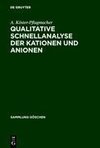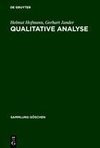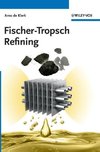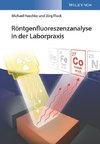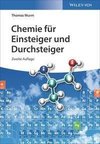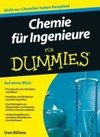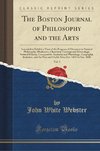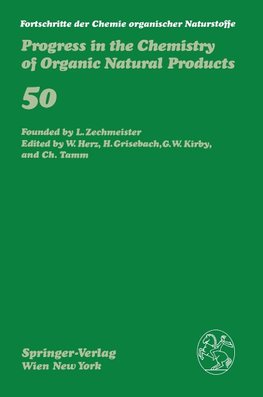
-
 Anglický jazyk
Anglický jazyk
Fortschritte der Chemie organischer Naturstoffe / Progress in the Chemistry of Organic Natural Products
The Irones and Their Precursors.- I. Introduction.- II. Isolation and Structure Determination.- III. Structure of the Irone Precursors.- IV. Stereochemistry of the Iridals and the Irones Derived from Them.- V. Minor Triterpenoids in Iris Extracts.- VI. Biogenesis... Viac o knihe
Na objednávku, dodanie 2-4 týždne
49.49 €
bežná cena: 54.99 €
O knihe
The Irones and Their Precursors.- I. Introduction.- II. Isolation and Structure Determination.- III. Structure of the Irone Precursors.- IV. Stereochemistry of the Iridals and the Irones Derived from Them.- V. Minor Triterpenoids in Iris Extracts.- VI. Biogenesis of the Iridals.- VII. Mechanism of Irone Ring Formation.- VIII. Biological Significance of the Compounds.- References.- The Condylocarpine Group of Indole Alkaloids.- 1. Introduction.- 2. Structures.- 2.1. Precondylocarpine.- 2.2. Condylocarpines.- 2.3. Dihydrocondylocarpines.- 2.4. Tubotaiwinal.- 2.5. Aspidospermatidines.- 2.6. 19,20-Dihydroaspidospermatine.- 2.7. Geissovelline.- 2.8. Dichotines.- 3. Isolation and Occurrence.- 3.1. Isolation.- 3.2. Occurrence.- 4. Biogenesis.- 5. Chemistry.- 5.1. Correlation of Alkaloid Structures.- 5.1.1. Precondylocarpine and Condylocarpine.- 5.1.2. Tubotaiwine.- 5.1.3. N-oxides.- 5.1.4. Aspidospermatidines.- 5.1.5. Geissovelline and Dichotine.- 5.1.6. Further Alkaloids from Precondylocarpine.- 5.2. Total Syntheses.- 5.2.1. Condyfoline.- 5.2.2. Tubotaiwine.- 5.2.3. Condylocarpine.- 6. Physical Properties.- 6.1. X-ray Crystallography.- 6.2. 13C NMR Spectroscopy.- 6.3. 1H NMR Spectroscopy.- 6.4. Mass Spectrometry.- 6.5. Other Spectra.- 7. Pharmacology.- References.- The Antibiotics of the Pluramycin Group (4H-Anthra[1,2-b]pyran Antibiotics).- 1. Introduction.- 2. General Structural Characteristics and Nomenclature.- 3. The Families of Pluramycin Antibiotics.- 3.1. Pluramycin A and Neopluramycin.- 3.2. Kidamycin and Isokidamycin.- 3.3. Hedamycin.- 3.4. The Rubiflavins and Rubiflavinones.- 3.5. Largomycin FII Chromophore Constituents.- 3.6. PD 121,222.- 3.7. Chromoxymycin.- 3.8. The Griseorubins.- 3.9. The Indomycins and Indomycinones.- 4. Chemical Properties.- 4.1. Separation Techniques.- 4.1.1. Preparative Separations.- 4.1.2. Analytical Separations.- 4.2. Spectroscopy.- 4.2.1. UV/VIS Spectra.- 4.2.2. IR Spectra.- 4.2.3. 1H-NMR Spectra.- 4.2.4. 13C-NMR Spectra.- 4.2.5. Mass Spectra.- 4.3. Chemical Reactivity.- 4.3.1. General Chemical Characterization.- 4.3.2. Degradation, Decomposition.- 4.3.3. Derivatization.- 4.4. Stereochemistry.- 4.4.1. Configuration.- 4.4.2. Conformations.- 5. Total Synthesis.- 5.1. Pluramycinones.- 5.2. Sugar Moieties.- 5.3. Pluramycin Antibiotics.- 6. Biosynthesis.- 7. Biological and Biochemical Behaviour.- 7.1. General Remarks.- 7.2. Toxicity.- 7.3. Activity Against Bacteria, Yeasts and Other Microorganisms.- 7.4. Interaction with Phages and Lysogenic Bacteria.- 7.5. Cytotoxicity.- 7.6. Interaction with Nucleic Acids and Mode of Action.- Acknowledgement.- Note added in proof.- References.- Cyclosporine and Analogues ¿ Isolation and Synthesis ¿ Mechanism of Action and Structural Requirements for Pharmacological Activity.- 1. Introduction.- 1.1. History and Summary.- 1.2. Nomenclature.- 1.3. Production of Cyclosporine.- 1.4. Elucidation of the Structure of Cyclosporine ¿ Conformation of Cyclosporine in the Crystal.- 1.5. Some Chemical Modifications of Cyclosporine.- 1.6. Natural Cyclosporine Analogues.- 1.7. Pharmacokinetics and Metabolism of Cyclosporine (1).- 1.8. Elucidation of the Conformation of Cyclosporine (1) in Aprotic Solvents.- 1.8.1. Backbone Conformation.- 1.8.2. Carbon Chains Conformations of Amino Acid Residues of Cyclosporine (1).- 1.8.3. Cyclosporine Conformation in Biological Fluids.- 2. Monoclonal Antibodies to Cyclosporine (1).- 2.1. The Antibody Response Induced by Cyclosporine.- 2.2. Fine Specificity of Monoclonal Antibodies.- 2.3. The Conformation of Cyclosporine Seen by Antibodies in Biological Fluids Seems to Be Similar to that Observed in Crystal.- 3. The Biosynthesis of Cyclosporine.- 4. Synthesis of Cyclosporine.- 4.1. Introduction.- 4.2. Synthesis of the Enantiomerically Pure Amino Acid MeBmt (83).- 4.2.1. Synthesis of (2R,3R)-3-methyl-1,2,4-butanetriol (65).- 4.2.2. Synthesis of (2R,3R,5E)-3-methyl-5-heptene-1,2-diol (71).- 4.2.3. Synthesis of (2R,3R,5E)-2-hydroxy-3-methyl-5-heptenal (76).- 4.2.4. Synthesis of (2S,3R,4R,6E)-3-hydroxy-4-methyl-2-(methylamino)-6-octenoic acid (MeBmt) (83).- 4.3. Strategy Used for the Synthesis of Cyclosporine (1).- 4.4. Cyclosporine Analogues.- 4.4.1. Synthetic Analogues.- 4.4.2. Semi-synthetic Analogues.- 4.4.3. Conformation of Cyclosporine Analogues.- 5. Biological Activity and Structure-activity Relationships of Cyclosporine Analogues.- 5.1. Conclusions.- 6. Mechanism of Action of Cyclosporin A.- 6.1. Introduction.- 6.2. Lymphokines and the Immune System.- 6.3. Importance of Interleukin-2 for Lymphocytes.- 6.4. Cyclosporine and Transcriptional Control.- 6.5. Membrane and Cellular Receptors.- 6.6. Conclusions.- References.- Biosynthesis of Iridoids and Secoiridoids.- I. Introduction.- II. Classification of Iridoids and Secoiridoids.- III. Mevalonoid Origin of Iridoids and Secoiridoids and Mechanism of Formation of Iridane Skeleton from Acyclic Monoterpenes.- 1. Mevalonoid Origin of Iridoids and Secoiridoids.- 2. Mechanism of Formation of Iridane Skeleton from Acyclic Monoterpenes.- IV. Biosynthetic Processes After Cyclopentane Ring Formation.- 1. Intermediacy of Deoxyloganic Acid, 8-Epideoxyloganic Acid and Loganic Acid in Biosynthesis of Iridoids.- 2. Approach to Elucidation of the Mechanism of Cyclopentane Ring Cleavage of Loganin to Secologanin.- V. Biosynthetic Relationships Between Groups of Secoiridoid Glycosides.- 1. Sweroside-Morroniside Type Glycosides.- 2. Oeloside-10-Hydroxyoleoside Type Glycosides.- VI. Biosynthetic Pathways of Alkaloidal Glycosides and Hydrangenosides.- 1. Biosynthesis of Alkaloidal Glycosides and the Role of Strictosidine and Deacetylisoipecoside in the Biosynthesis of Alkaloids.- 2. Biogenesis of Hydrangenosides.- VII. Epilogue.- List of Compounds.- References.- Author Index.
- Vydavateľstvo: Springer Vienna
- Rok vydania: 2012
- Formát: Paperback
- Rozmer: 229 x 152 mm
- Jazyk: Anglický jazyk
- ISBN: 9783709188903


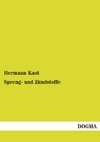
 Nemecký jazyk
Nemecký jazyk 